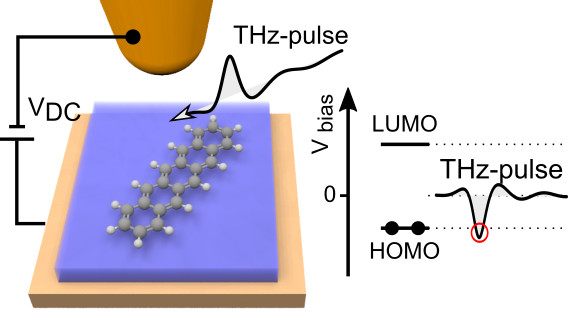



Keynote
Individual Molecules on Surfaces: From Chemical Reactions to Ultra-Short Timescales
Department of Physics, University of Regensburg, 93040 Regensburg, Germany
We investigated different kind of π-conjugated molecules in a combined scanning tunneling (STM) and atomic force microscope (AFM). Whereas both measurement channels show features with sub-molecular resolution, the information they can provide is truly complementary. For example, STM allows the direct imaging of the unperturbed molecular orbitals [1], whereas the AFM channel directly reveals the molecular geometry [2, 3]. Further, we used the AFM-derived technique Kelvin probe force spectroscopy (KPFS) with sub-molecular resolution to image the polarity of individual bonds inside a single molecule [4].
The possibility of tailoring optical waveforms has allowed scientists to steer ultrafast electronic motion directly via the oscillating carrier wave of light - a principle dubbed "lightwave electronics" [5]. Despite tremendous interdisciplinary efforts to combine ultrafast temporal resolution with atomic spatial resolution, the ultrafast dynamics of individual molecular orbitals has remained out of reach.
Terahertz (THz) scanning tunnelling microscopy [6] (THz-STM) has introduced a new paradigm by combining STM with lightwave electronics. In THz-STM, the electric field of a phase-stable single-cycle THz waveform acts as a transient bias voltage across an STM junction. In analogy to the all-electronic pump-probe scheme introduced recently in STM [7] these voltage transients may result in a net current that can be detected by time-integrating electronics.
By means of a low-noise low-temperature lightwave-STM we entered an unprecedented tunnelling regime, where the peak of a terahertz electric-field waveform opens an otherwise forbidden tunnelling channel through a single molecular orbital. In this way, the terahertz peak removes a single electron from an individual pentacene molecule's highest occupied molecular orbital within a time window of ∼ 100 fs - faster than an oscillation cycle of the terahertz wave. This quantum process allowed us to capture a microscopic real-space snapshot of the molecular orbital on a sub-cycle time scale. By correlating two successive state-selective tunnelling events, we directly tracked coherent THz vibrations of a single molecule in the time domain [8].

Figure 1: Schematic representation of the lightwave-STM setup, in which the THz-pulse acts as a bias transient.
[1] J. Repp et al., Phys. Rev. Lett. 94, 026803 (2005).
[2] L. Gross et al., Science 325, 1110 (2009).
[3] F. Albrecht et al., JACS 137, 7424 (2015).